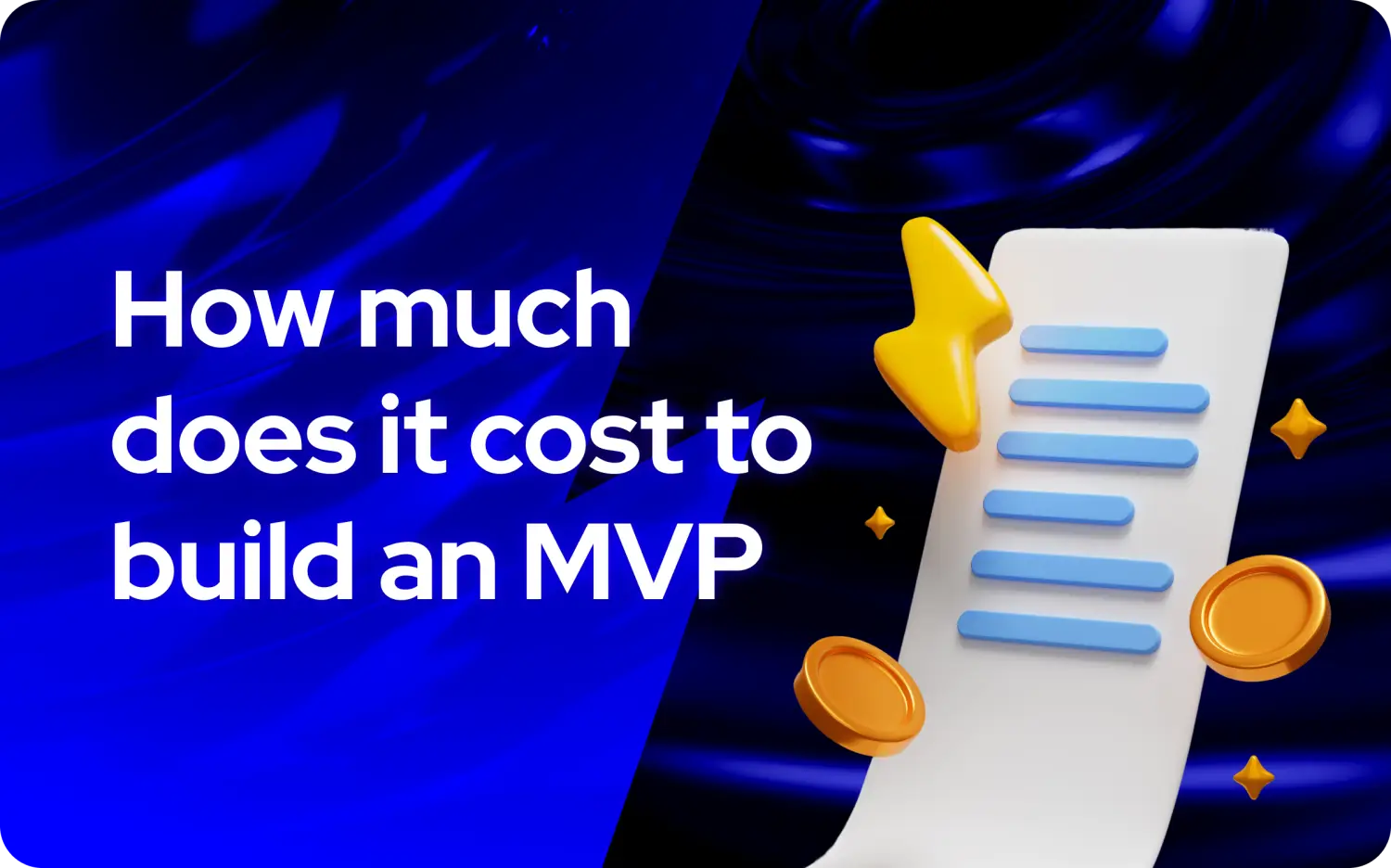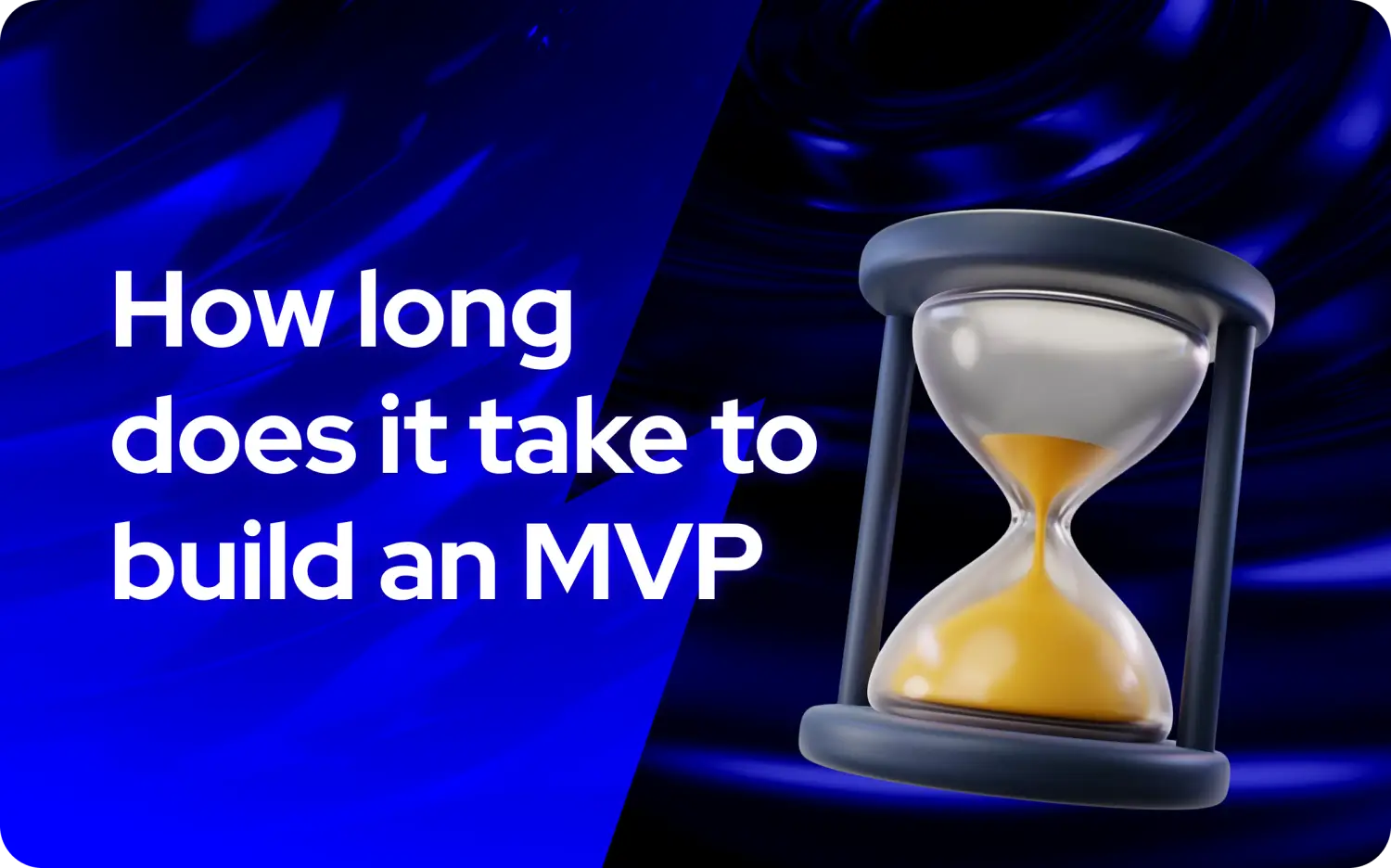
Launching your first MVP? Yeah, it's terrifying. I still remember staring at my laptop at 3 AM, wondering if anyone would actually use what we built. That anxiety? Completely normal, but it doesn't have to paralyze you.
Here's the brutal truth: most MVPs fail not because the idea is bad but because the founder never ships. Founders overbuild, chase perfection, and get stuck. This article will show you how to keep your MVP simple, focus on the essentials, and launch faster, especially if you're building with no-code tools like Bubble.
Think of your MVP like a first date. You want to make a good impression, but you don't need to reveal everything. This guide walks you through battle-tested strategies that'll transform your MVP launch from a shot in the dark into a calculated move toward product-market fit.
The 80/20 rule of MVPs
The Pareto Principle applies perfectly to MVPs: 80% of your product's value comes from 20% of the features. Your goal is to find and build only what solves the main pain point.
Many founders miss this critical insight and try to build everything at once. The result? Bloated MVPs that take too long to launch, cost too much to build, and don't effectively test your core hypothesis.
Here's how to identify those high-value features:
- Interview potential users about their current workflows and frustrations
- Notice patterns in their responses, especially pain points mentioned repeatedly
- Map these pain points to the smallest possible solutions
- Prioritize features that directly address the most painful problems
When we worked with a recruitment startup founder, she initially wanted to build a platform with candidate profiles, job matching, interview scheduling, and applicant tracking. Through user interviews, we discovered that recruiters primarily struggled with scheduling interviews across time zones. We focused her MVP solely on that pain point, launching in 3 weeks instead of 3 months. This targeted approach resulted in immediate adoption and clear validation.
The MVP trap: overbuilding
The most common mistake founders make is falling into the overbuilding trap. Here are the warning signs you might be heading down this dangerous path:
Common mistakes:
- Adding every feature you can think of
- Waiting for "perfect" design
- Confusing MVP with full product
The cost: wasted time, no validation, zero feedback.
I've seen founders spend months perfecting features that users end up ignoring completely. This isn't just wasted development time; it's also wasted opportunity. While you're polishing features in isolation, competitors are learning from real users.
One founder I worked with kept delaying launch to add "just one more feature." Six months later, a competitor launched a simpler solution and captured the market while his product was still in development. The irony? The competitor's product lacked many "essential" features he was still building.
Remember: your assumptions about what users want are probably wrong. The only way to find out what they actually want is to get something in their hands as quickly as possible.
How to keep your MVP simple
Simplicity requires discipline. Start by answering these three critical questions:
- What problem are we solving? Be specific and focus on one problem.
- What are the 1 to 2 core features that solve it? Just the essentials.
- What can wait until later? Be ruthless here.
At Minimum Code, we never start development before this is clear. Our discovery process helps founders narrow their focus to what truly matters for the first launch.
A healthcare startup came to us wanting to build a patient management platform with scheduling, medical records, billing, and telemedicine features. After our discovery process, we identified that scheduling and basic patient records were the only essential features. We launched with those two features in 4 weeks, enabling immediate user testing. The feedback completely changed their roadmap, revealing that what doctors actually wanted most was seamless insurance verification, a feature that wasn't even on their original list.
Saying no to unnecessary features
Clients often ask for "nice to have" features early. Learning to say no (politely) is a critical skill for successful MVP launches.
How we handle feature requests:
- Acknowledge: "That's a good idea for later."
- Refocus: "Let's validate the core idea first."
- Offer a roadmap: "Here's how it fits in after launch."
This approach protects your budget and timeline while keeping stakeholders engaged. Create a "future features" list that captures these ideas without committing to them. Sometimes the most valuable thing you can do is refuse to build something.
The development team should serve as the voice of reason in these discussions, advocating for simplicity and focus rather than just building whatever is requested.
Our MVP planning process at Minimum Code
Having a structured planning process prevents scope creep and keeps everyone aligned. Here's how we do it:
Tools we use:
- ChatGPT to brainstorm and structure product ideas
- MoSCoW method to set priorities:
- Must-have: launch features
- Should-have: important but not urgent
- Could-have: nice to have but not needed yet
- Won't-have: explicitly not in scope for this version
This framework creates clear boundaries around what will and won't be built in the MVP. The "Won't-have" category is particularly important because it makes explicit decisions about what to exclude.
We document this in a simple product spec that serves as the single source of truth throughout development. Every feature request gets evaluated against this document, preventing scope creep.
MVPs are built to evolve
Great products start small. Understanding this historical pattern helps set realistic expectations for your MVP:
- Instagram started as a photo sharing feature from a check-in app called Burbn
- Twitter began as an internal messaging tool for a podcasting company
- Airbnb was just air mattresses in the founders' living room
You don't need to be perfect to start. You just need to launch and learn. Your MVP should be viewed as the first step in an evolutionary process, not a final product.
Many founders we work with get stuck in the trap of trying to build their "vision" all at once. The most successful ones embrace the evolutionary nature of product development, using each version as a learning opportunity.
Launch fast, learn faster
If you're still building after 3-6 months, you're probably overbuilding. The goal should be to get something in users' hands as quickly as possible so you can start the learning process.
Focus on this cycle: launch > feedback > iterate.
Let your users tell you what to improve, not your assumptions. Every week you spend building without user feedback is a week you're potentially moving in the wrong direction.
Teams utilizing Bubble development can move particularly fast, often launching initial versions in weeks rather than months, accelerating this feedback loop dramatically.
Market research & validation strategies
Pre-launch user interview campaign
User interviews aren't just a nice-to-have. They're your insurance policy against building something nobody wants.
Pro tip: Your friends will lie to you about your idea. Strangers won't.
Create interview scripts that dig deep into problem identification. Ask about current solutions, pain points, and most importantly, willingness to pay. Don't lead with your solution; start with their problems. The magic happens when you hear the same pain points described in nearly identical language across multiple interviews. That's your messaging goldmine.
Target 10-15 interviews minimum. Recruit through your network, LinkedIn outreach, or relevant online communities. Record sessions (with permission) and look for patterns in responses. User interviews will crush some of your favorite ideas. But better to learn this now than after you've spent six months building.
Landing page validation test
A well-crafted landing page can validate demand before you write a single line of code. Create a page that clearly articulates your value proposition and includes a compelling call-to-action for email signups.
Focus on the problem you're solving, not the features you're building. Headlines should speak directly to your target audience's pain points. "Finally, manage your team's time tracking in under 5 minutes" beats "Revolutionary time management software" every time. Nobody cares about your revolutionary anything. They care about their problems.
Drive 1000+ visitors through targeted Facebook or Google ads ($200-500 budget). If less than 15 out of 100 people are willing to give you their email, that's your market telling you something. Listen to it. Anything below 10% suggests messaging or market fit issues. A/B test different headlines, value propositions, and CTA buttons. Small changes can dramatically impact conversion rates.
Clickable prototype testing
Prototypes reveal usability issues that interviews might miss. Tools like Figma, InVision, or Marvel let you create realistic user flows without any development work.
Focus on your core user journey. The path from landing on your app to completing the primary action. Make it feel real with actual content, not lorem ipsum placeholder text. Nobody wants to log into an app and feel like they need a PhD to figure it out.
Recruit 8-12 testers and watch them navigate your prototype. Don't give instructions; observe where they get confused or stuck. These friction points will kill your conversion rates in the real product. Pay attention to what users say versus what they do. They might claim something is "intuitive" while clearly struggling with the interface.
Product development & testing strategies
No-code MVP development
No-code MVP development has matured to the point where you can build sophisticated MVPs without traditional programming. Look, if you're tired of waiting months for developers or burning through your savings on custom code, this is your answer.
Choose your platform based on your specific needs:
- Complex web apps: Bubble
- Simple websites: Webflow
- Mobile apps: FlutterFlow or Adalo
- E-commerce: Shopify with custom apps
Plan for a 4-week development cycle: Week 1 for database design and authentication, Week 2 for core user flows, Week 3 for payments and notifications, Week 4 for testing and deployment. That "simple" feature will take three times longer than you think, so build in buffer time.
Set up staging and production environments from the start. Implement basic SEO structure and analytics tracking. Plan your infrastructure to handle 10x user growth (trust me, you want this problem).
Manual service MVP (concierge MVP)
Sometimes the fastest way to validate your idea is to do everything manually first. This "concierge MVP" approach lets you test demand while learning exactly what your automated solution needs to do.
Picture this: you want to build project management software. Instead of spending months coding, recruit 5-10 initial customers and manage their projects manually using spreadsheets and email. Document every step of your manual process. This becomes your automation roadmap. You'll discover edge cases and user preferences that would take months to uncover otherwise.
The labor intensity is a feature, not a bug. It forces you to stay close to customers and understand their real needs before building complex automation. Plus, you're making money while you learn.
Buffer's founders manually posted social media updates for their first customers using a simple scheduling interface. This manual approach helped them understand posting patterns, optimal timing, and user preferences before building automated scheduling features. They validated demand and learned critical product requirements while generating revenue from day one.
Marketing & audience building strategies
Content marketing pre-launch
Content marketing builds trust and authority before you ask for anything in return. Start creating valuable content 3-6 months before your planned launch.
Develop a content calendar addressing your audience's biggest problems. If you're building project management software, create content about team productivity, remote work challenges, and project planning best practices. Show them you understand their world before you try to sell them anything.
Focus on SEO-optimized blog posts, but don't ignore video and audio content. Different people consume information differently, and you want to meet them where they are. Consistency matters more than perfection. Publishing one helpful article per week for six months beats publishing ten articles in one month then going silent.
Email list building campaign
Email lists are owned media. You control the relationship with your audience. Social media platforms can change algorithms or ban accounts, but your email list stays with you. It's like having your customers' phone numbers.
Create compelling lead magnets that solve specific problems for your target audience. Templates, checklists, guides, or mini-courses work well. Set up automated email sequences that provide value while building anticipation for your launch. Share behind-the-scenes content, user research insights, and early previews.
Drive traffic to your signup forms through content marketing, social media, and partnerships. Aim to build a list of 500-1000 engaged subscribers before launch. Quality beats quantity every time.
Launch execution & operations strategies
Soft launch to limited audience
Soft launches let you test your MVP with real users while maintaining control over the experience. Your first launch will probably flop. Plan for launch #2.
Select 50-100 initial users from your network, beta testers, or early email subscribers. Provide white-glove onboarding to these early users. Schedule personal calls, offer direct support, and gather detailed feedback about their experience. Yes, this doesn't scale, but you're not trying to scale yet. You're trying to learn.
Structure your soft launch over 6-8 weeks: Week 1 for onboarding, Weeks 2-6 for usage and feedback collection, Week 7 for exit interviews and testimonial requests. Use this period to identify and fix critical issues before your public launch. Early users are more forgiving of problems if they feel heard and valued.
Analytics and tracking implementation
You can't optimize what you don't measure. Implement comprehensive analytics from day one to understand how users interact with your product. Data doesn't lie, but it also doesn't tell the whole story. You need both numbers and conversations with users.
Set up Google Analytics for basic traffic and conversion tracking, but also implement user behavior tools like Mixpanel, Amplitude, or Hotjar for deeper insights. Track key events that indicate product engagement: account creation, first use of core feature, return visits, and conversion to paid plans.
Create conversion funnels to identify where users drop off in critical flows like onboarding or checkout. These insights directly inform optimization priorities. Set up automated reports and dashboards so you can monitor key metrics without manual data pulling. Weekly metric reviews should become a standard practice.
Post-launch growth & iteration strategies
User feedback collection system
Continuous feedback collection is essential for achieving product-market fit. Implement multiple feedback channels to capture different types of insights.
Use in-app feedback tools like Hotjar or UserVoice to capture feedback at the moment of frustration or delight. Context matters enormously for actionable insights. The day we got our first angry customer email, I thought we'd failed. Turns out, it was the beginning of our biggest breakthrough.
Conduct monthly user surveys asking about satisfaction, missing features, and likelihood to recommend. Keep surveys short (5 questions max) to maintain response rates. Schedule regular user interviews with your most engaged users. They'll provide the deepest insights about how your product fits into their workflow and what improvements would be most valuable.
Analyze support tickets for patterns. Repeated questions often indicate UX problems or missing features that should be addressed in product updates.
A/B testing and optimization
A/B testing turns optimization from guesswork into science. Test everything from headlines and button colors to entire user flows.
Identify optimization opportunities by analyzing user behavior data and feedback. Focus on high-impact areas like onboarding, core feature adoption, and conversion flows. This sounds simple, but you'll probably mess it up the first time (we all do).
Design experiments with clear hypotheses and success metrics. Test one variable at a time to isolate what drives results. Implement testing frameworks like Optimizely, VWO, or custom solutions that can handle traffic splitting and statistical significance calculations.
Run tests until you reach statistical significance, then implement winning variations. Document learnings to inform future optimization efforts.
Final takeaway
Most MVPs don't fail because of bad ideas. They fail because they never ship.
Building something from nothing is hard as hell. You'll question everything, lose sleep, and wonder why you didn't just get a normal job. But when someone pays you for solving their problem? That feeling makes all the chaos worthwhile.
The keys to successful MVP launches are:
- Keep it lean
- Launch fast
- Iterate smart
Remember that speed matters, but smart execution matters more. The people who make it through this crazy journey aren't necessarily the ones who launch first. They're the ones who learn fastest and adapt most effectively to what the market tells them. Your MVP launch is just the beginning of that learning journey.
Want help getting your MVP out of your head and into the hands of users? Book a free intro call with Tom.

Ready to build your product?






.avif)


